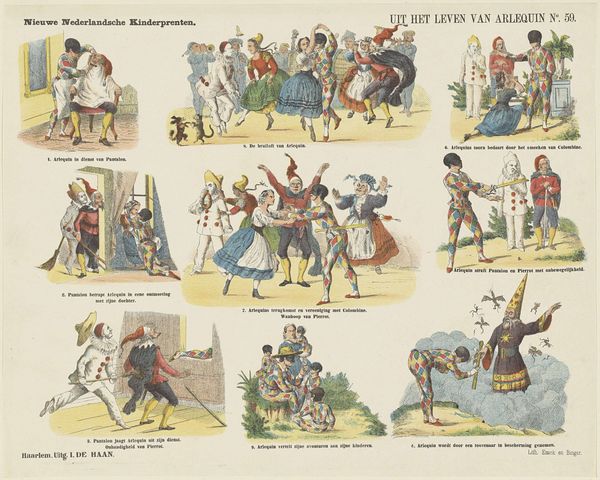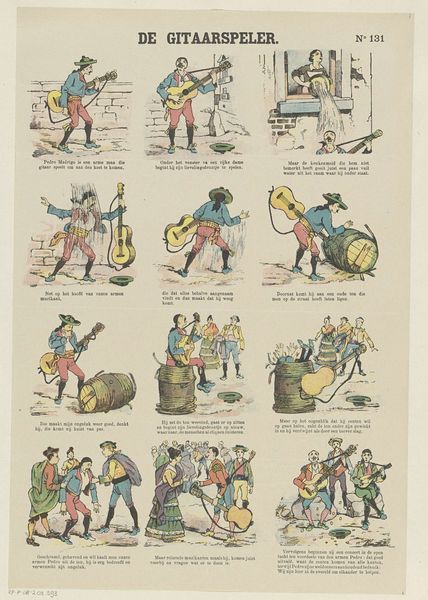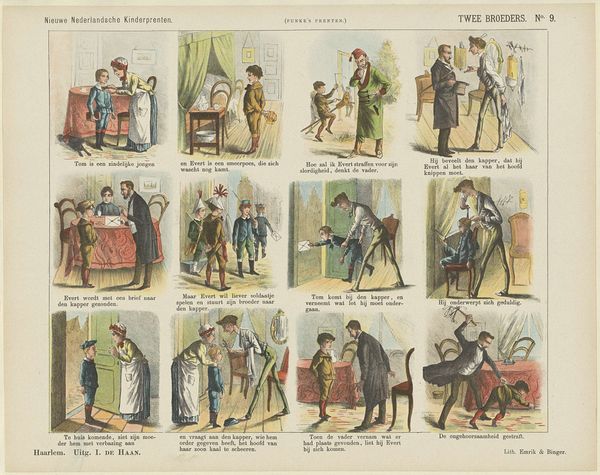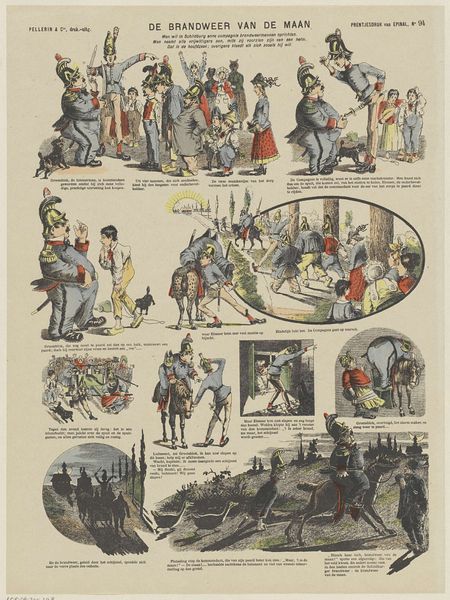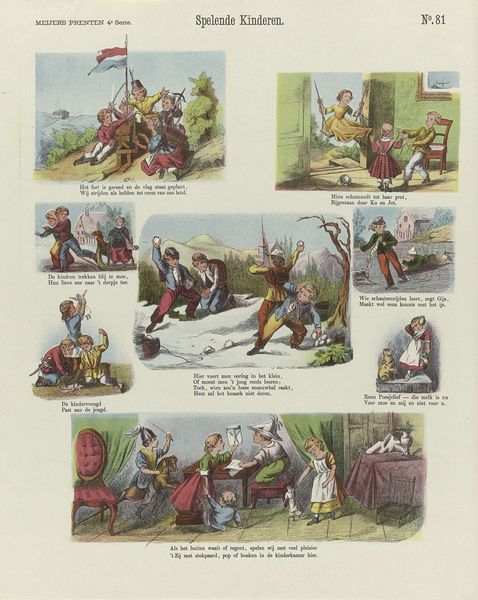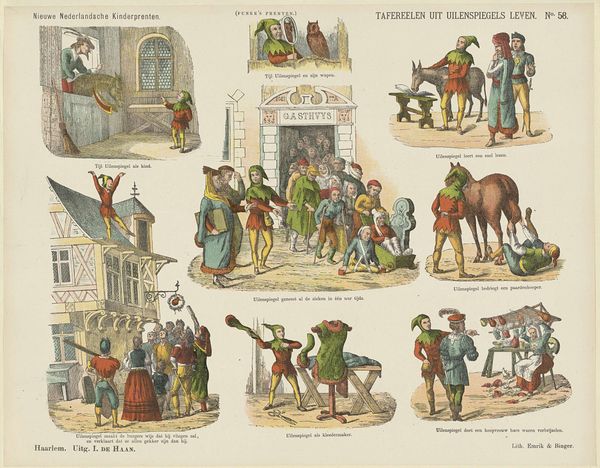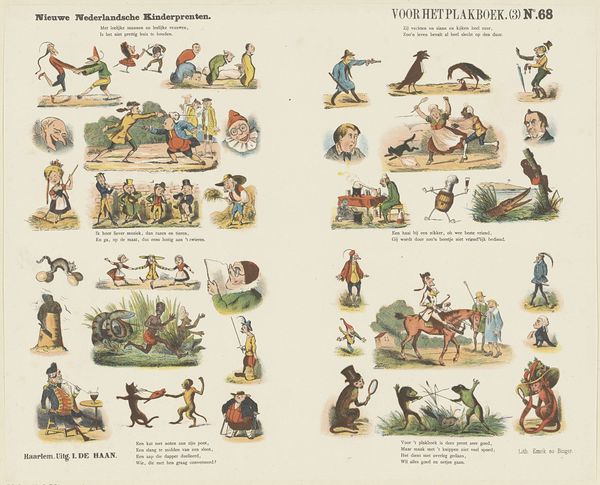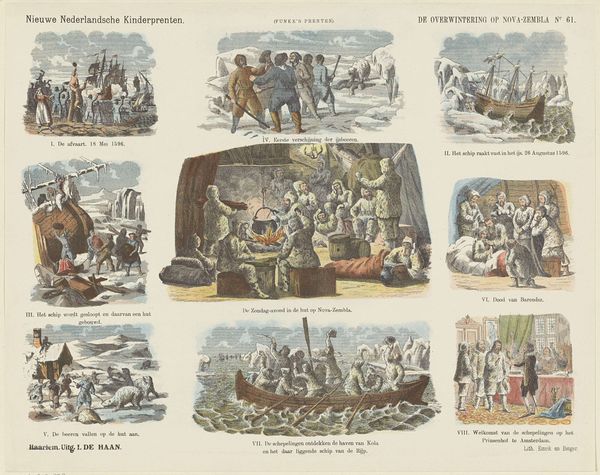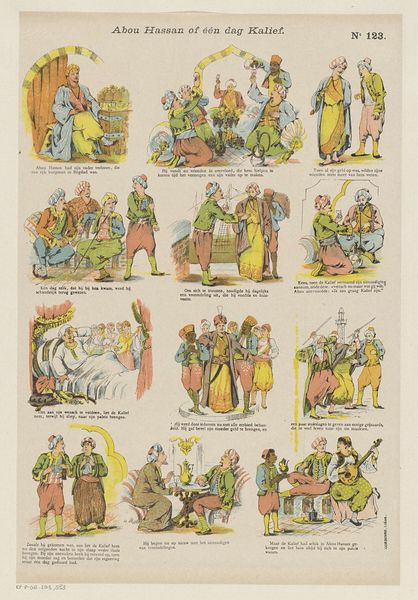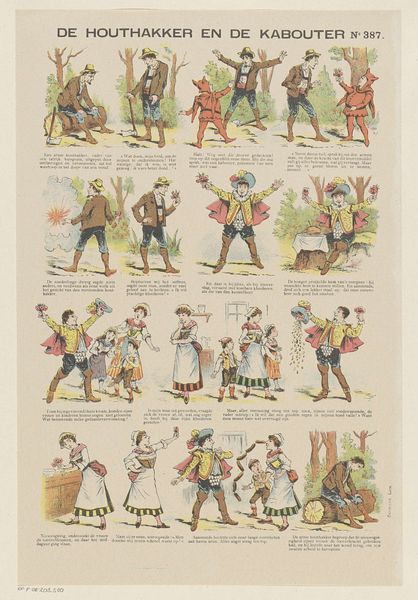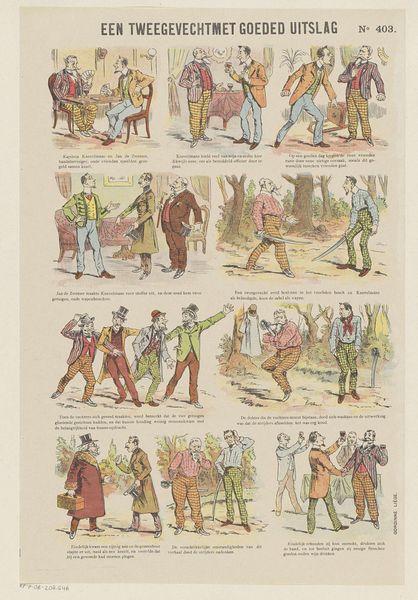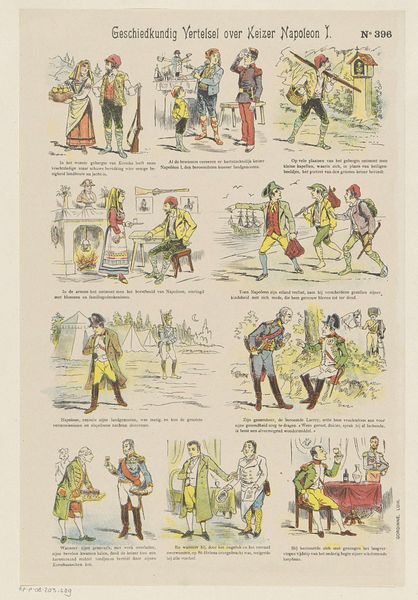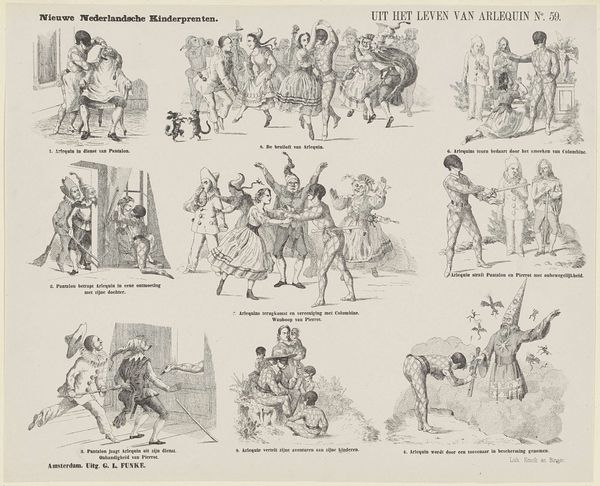
Dimensions: height 345 mm, width 430 mm
Copyright: Rijks Museum: Open Domain
Editor: This print, "Uit het leven van Jan Klaassen," dating from between 1875 and 1903 and made using lithography and etching, shows Jan Klaassen in lots of little scenes, like a grid. It reminds me of a storyboard. What symbols or recurring motifs jump out at you in this image? Curator: What strikes me immediately is Jan Klaassen himself – a Dutch iteration of Punch from the Punch and Judy shows. His presence anchors the entire image. Notice the recurrence of his jester-like costume in most scenes; what does that uniform represent in Dutch cultural memory, and how might its evolution be reflected across the different vignettes depicted here? Editor: I guess the costume means he’s supposed to be funny or mischievous, maybe both. But in one scene he's face to face with death; in another he's a soldier... Curator: Precisely. Think of the costume as a signifier of chaos, perhaps, or subversive behaviour within a seemingly orderly world. Each panel becomes a stage for him to disrupt social norms or confront archetypal roles. He’s also confronting Death, as you mentioned, turning existential encounters into almost farcical bits. Does the composition change our perception of the folk figure? Editor: Definitely. Seeing all those different versions makes me realize that he can represent many things – humor, rebellion, even just ordinary life, maybe. The constant character in the image and various roles shows how he has persisted in the culture. Curator: Exactly. This print encapsulates a cultural figure's endurance, reflecting shifting societal values through visual repetition and adaptation. These folk images really acted like an archive.
Comments
No comments
Be the first to comment and join the conversation on the ultimate creative platform.
